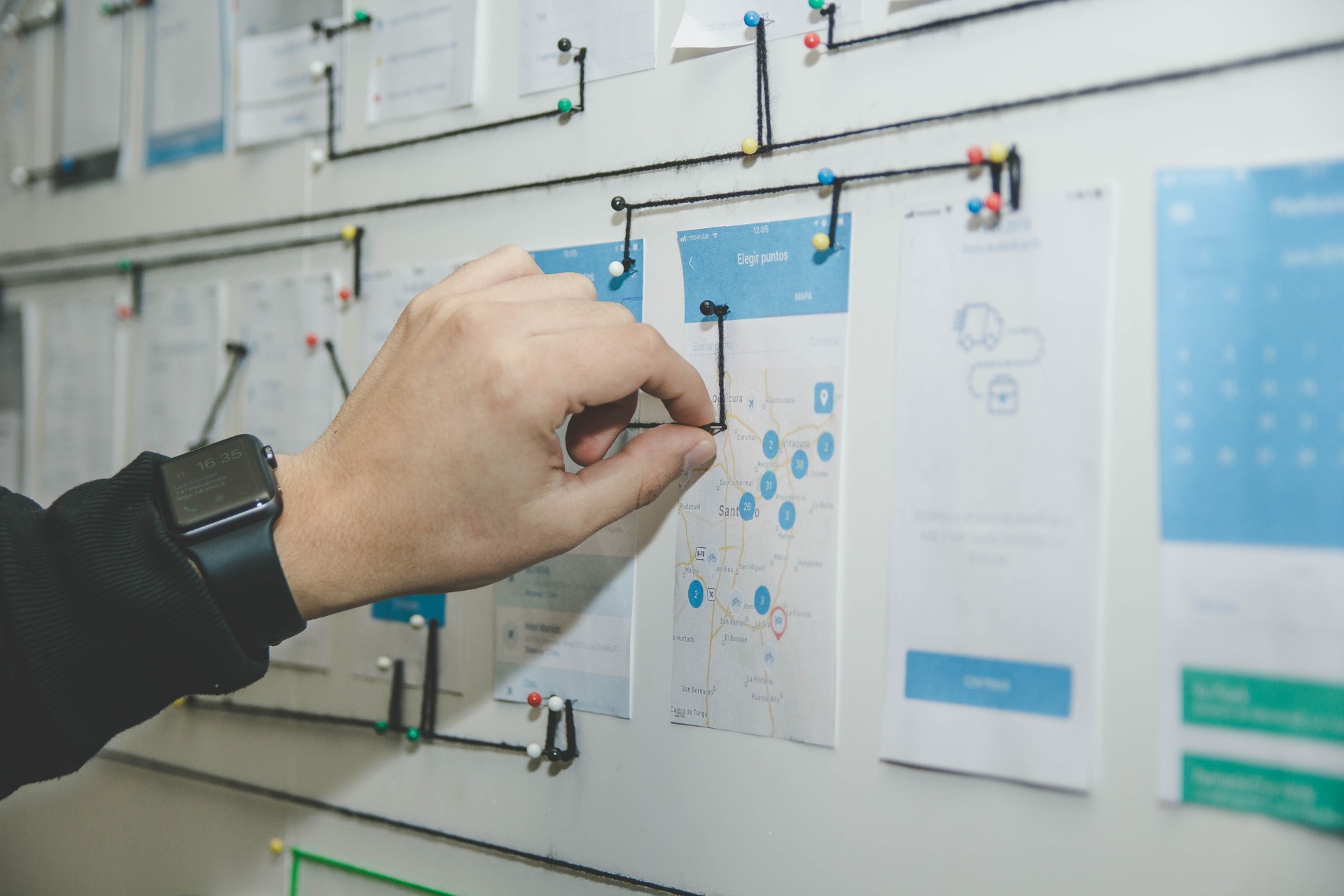Machinery Safety: European Directive 2006/42/CE
Introduction
One of the fundamental principles of the European Union is the protection of the health of its citizens , both in the private and professional spheres. Another fundamental principle is the creation of a single market with free movement of goods. And finally, the protection of the environment .
To obtain the free movement of goods , we basically have to eliminate 3 trade barriers: Physical barriers (national border controls); Technical barriers (national security requirements); Fiscal barriers (customs taxes).
In accordance with the Treaty on the Functioning of the European Union, the European Commission and the Council of the European Union approved various directives with the aim of achieving the free movement of goods and, in parallel, the protection of its citizens and the environment . Before the introduction of the European Directives, manufacturers had to comply with multiple, often conflicting, national compliance systems. That is, different requirements for each country . Today, fortunately, a product that meets the requirements of the European Directives can be sold in all member countries.
Member States apply these directives in their national legislation. The directives define objectives and basic requirements and, as far as possible, remain technology-neutral. To date, the following directives have been published in the field of occupational health and safety and machine safety:
- The Machinery Directive (2006/42/EC) , which is addressed to machine manufacturers,
- The Work Equipment Directive, which is aimed at users of machines.
- Additional directives, e.g. Low Voltage Directive (2014/35/EU), EMC Directive (2014/30/EU), Safety Directive (2001/95/EC), ATEX Directive (1999/92/EC).
European directives and standards apply to manufacturers and organizations that market machinery in the European Union.
Machinery safety largely depends on the correct application of directives and standards . In Europe, national legal requirements are harmonized through European directives such as the Machinery Directive .
These directives describe the general requirements that are specified in more detail by the standards. European standards are also often accepted outside of Europe.
Machinery Directive 2006/42/CE
The Machinery Directive 2006/42/EC is addressed to machine manufacturers and distributors and sets out the necessary tasks for new machines to meet health and safety requirements in order to dismantle trade barriers within Europe and ensure a high level of health and safety for users and operators.
It applies to machines and safety components marketed individually, as well as used machines and safety components from third countries that are marketed in the European Economic Area for the first time (USA , Japan, China, etc.).
Member states are obliged NOT to prohibit, restrict or prevent the distribution and commissioning of machinery and safety components that comply with the Machinery Directive. They are also prohibited from applying national laws, ordinances or standards to impose more stringent requirements on the quality of machinery.
At a conceptual macro level, the objective of the Machinery Directive is:
- Guarantee the free movement of machinery in the common market.
- Guarantee a high level of protection for users and other people exposed to risk.
- To ensure safety by design.

What are the obligations of machinery manufacturers?
- Safe machinery design . Manufacturers are required to build their machines in accordance with the essential health and safety requirements of the Machinery Directive . Manufacturers will need to consider security integration during the design process. In practice, this means that the designer must carry out a risk assessment very early, during the development phase of the machine. The resulting measurements will directly impact the design.
- Preparation of operating instructions . The manufacturer of the machine must prepare the operating instructions, known as "original operating instructions". A set of operating instructions in the official language of the country of use will be supplied with each machine .
- Preparation of technical documentation . The machine manufacturer will prepare the technical documentation in accordance with Annex VII of the Machinery Directive. This technical documentation shall contain all diagrams, calculations, test reports and documents that are relevant to compliance with the essential health and safety requirements of the Machinery Directive; It will be archived for at least ten years from the last day of manufacture of the machine (or the type of machine); It must be presented to the authorities upon duly motivated request.
During the design and manufacture of machinery, the machine builder must identify and assess all potential hazards by conducting a risk assessment. Based on this risk assessment, the machine manufacturer must take appropriate design measures to eliminate or reduce the risk. If the risk cannot be eliminated by these design measures or the remaining risk cannot be tolerated, the machine manufacturer will select and apply suitable protection devices and provide information on residual risks if necessary.
Above all, they must be designed and constructed in such a way that:
- Control systems must be designed and constructed in such a way that dangerous situations are avoided. They can withstand expected operating stresses and external influences.
- A failure in the hardware or software of the control system does not give rise to dangerous situations (systems fail safe ).
- Errors in the logic of the control system do not lead to dangerous situations.
- Reasonably foreseeable human error during operation does not lead to dangerous situations.
Furthermore, in designing and building machinery and in writing instructions, the manufacturer must anticipate not only the intended use of the machine, but also any reasonably foreseeable misuse of the machine .
The machinery must be designed and manufactured in such a way as to avoid abnormal use if such use would entail a risk. Where appropriate, the instructions should draw the user's attention to ways, which experience has shown may occur, in which the machinery should not be used.
If the machine manufacturer has built the machine properly, he must declare, in a legally binding manner, compliance with these requirements by issuing a declaration of conformity and marking the machine (CE marking). The machine is then allowed to be marketed in the European Union.
The CE marking can only be applied if the machine complies with all applicable European directives. (Only then is the marketing of a product allowed in the European Union).
As a manufacturer of a machine, among other requirements, the Machinery Directive applies to you:
- You must comply with all the essential health and safety requirements of the Machinery.
- You will need to consider security integration during the design process.
- For the declaration of conformity , you must use the standard procedure or the procedure for machinery in Annex IV of the Machinery Directive .
- You will need to compile a technical documentation file for the machine; In particular, this will include all security-related design documents .
- You must provide operating instructions with the product in the official language of the country of use. The original version must also be supplied with the product.
- You will need to complete a declaration of conformity and mark the machine or safety component with the CE mark .
The Machinery Directive details the entire process for conformity assessment. A differentiation is made between two procedures for machinery.
Machines that are not explicitly listed in Annex IV (NOT particularly dangerous or NO safety machines) of the Machinery Directive are subject to the standard process. The requirements described in the "Essential health and safety requirements" section of Annex I shall be met. It is the manufacturer's responsibility to apply the CE marking , without involving a testing body or authorities ("self-certification"). However, the manufacturer must first compile the technical file so that the documentation can be submitted to national authorities upon request.
What do we consider as machinery?
We can define a machine as a system provided or equipped with one or more drives other than human or animal effort, consisting of mechanically linked parts or components, at least one of which moves and which are linked together to solve a problem. specific application .
Or seen in another way, we can define what the Machinery Directive excludes from its scope: Manually operated machinery; Machinery for medical use, used in direct contact with patients; special equipment for use in fairgrounds and/or amusement parks; Steam boilers, tanks and pressure vessels; Machinery used for nuclear purposes; Firearms; maritime vessels; Agricultural and forestry tractors, etc.
(A full list of excluded machinery can be found in Article 1, paragraph 3 of the Directive)
Application standards to comply with the Machinery Directive
In order to implement the objectives and requirements defined in the European directives into practice, standards are used, which describe and specify these requirements in a very specific way.
Therefore, the standards describe the requirements of the European Directives in concrete detail, in such a way that conformity with the standards provides presumption of conformity with the directives that are classified as harmonized standards.
In other words, if the proper standards are selected and applied to a machine or system, it can be assumed that legal requirements will be met. This concept is called "the presumption of conformity" of compliance with the Directive, in this case, the Machinery Directive.
Below we present the most used standards to cover the requirements described in the Machinery Directive:

What are the most recommended risk
reduction strategies according to Leedeo 's experience? Engineering ?
- Specify the applications and limitations of the machine.
- Identify hazards and assess risk .
- If possible, eliminate the hazards or reduce the risk as much as possible.
- Implement barriers and/or safety features against residual risks.
- Inform and warn the user of residual risks .
- When describing the application(s) of the machine, we have to consider:
- Possible misuse resulting from carelessness and foreseeable misuse (for example, use of the machine by children).
- Reflex actions of the operators when faults occur in the machine (the easiest way to perform actions will be the one selected by the users of the machine).
- Consider the actions of special users such as the disabled, children, etc.
In Leedeo Engineering , we are specialists in the development of projects to comply with the Machinery Directive, supporting our clients throughout their product development life cycle.
Are you interested in our articles about RAMS engineering and Technology?
Sign up for our newsletter and we will keep you informed of the publication of new articles.





